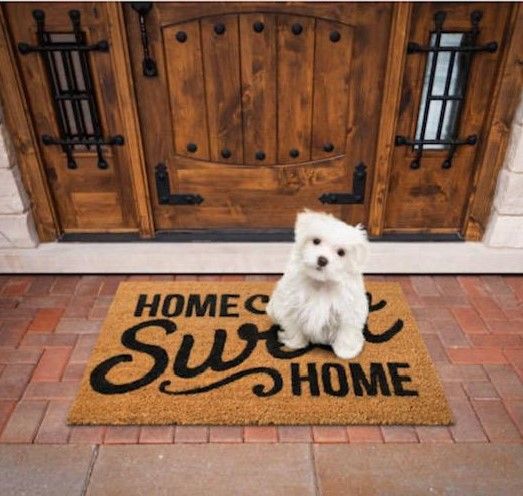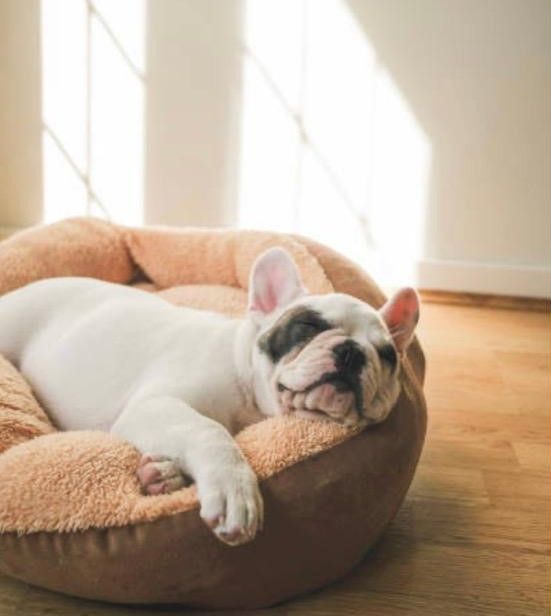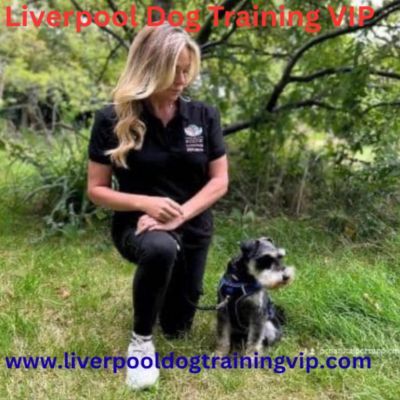Nervous and reactive dogs on walks
How to help a dog that is nervous or reactive on a walk
Helping nervous reactive dogs on walks.
The first thing to remember is that your dog is not giving you hard time, he’s having a hard time coping. Dogs can be reactive to many things such as dogs, people, cars, cyclists, and joggers.
This behaviour can be so stressful for owners, they can get to the point of not wanting to go out for a walk because they feel embarrassed. Some owners with reactive dogs will end up resorting to extremes, such as walking at one or two o’clock in the morning to avoid whatever it is that triggers their dog. Although this may be ok short-term, it is not much of a life for either you or your dog.
Will my dog grow out of this behaviour?
This is very unlikely, what may happen is they will get progressively worse, and another dog or person could get hurt as a result. If you are struggling, I recommend you find a dog behaviourist to help you. Remember every dog is different and you will need to set out a training program with your behaviourist to follow. 121 training is the best way to start, training classes are not the place to try to sort things out. Ask a vet to give your dog a physical check-up, as pain and hypothyroidism are frequent factors in reactive behaviour. Low grade discomfort can cause even the nicest natured dog to become short tempered and intolerant.
If you are feeling really nervous about taking your dog out on your own, ask a family member to walk with you. The presence of another person can have a calming effect on you and your dog. Please choose someone who is calm. If you have a large dog the other person can attach the lead to a side ring on the harness to help keep him in the middle, only one person should guide the dog though otherwise, it gets confusing for the dog. This can also help with very nervous dogs.
De-stress before going for a walk, this is really important adopting the right frame of mind. Your dog may be the one with the problem, but you can easily accentuate it if you are not careful. By feeling tense and anxious and expecting the worst, your dog will quickly pick up on your nervous energy and will start actively looking around for the cause of your concern. When your dog starts to react to a trigger, some owners behave reactively themselves shouting at him and pulling on the lead, but this only reinforces the behaviour. It is really hard to remain calm sometimes, but it’s essential. Try before your walk to do some deep breathing techniques. Breathing is really important as when you’re feeling anxious you are likely to take shorter more rapid breaths, which your dog will notice, and this creates tension in your posture. Doing some breathing exercises can be very calming. Listening to calming music, meditation, leave drinking the bottle of wine till you get back home 🤭just kidding.
De-stressing your dog before you go out for a walk.
Play a game with your dog such as a flirt pole to burn off some energy but remember after flirt pole to bring your dog back down again with some relaxing enrichment like a snuffle mat, or stuffed food Kong for half an hour. Do not let your dog sit in the window barking at passing dogs and people because this won’t help your dog on his walk to stay calm.
Avoid confrontation.
Although training your dog how to cope with things he’s scared of is likely to form an important part of remedial work, it needs to be done gradually, introducing the triggers very carefully in controlled environments with the help of a dog behaviourist. Choose quiet environments to walk in so it is not overstimulating, keep your distance from things likely to promote reactive behaviour or extreme nervousness. It is important your dog still gets exercise as a lack of it can increase undesirable behaviours and increase frustration. Do not be letting your dog off the lead while you are working with this behaviour and have no recall on your dog. If you want to let your dog free run, look at hiring a safely enclosed paddock.
Keep everyone safe.
If your dog is known to bite other dogs or people be responsible by using a muzzle to ensure the safety of your dog and other dogs around. If your dog nips or bites someone it does not matter that he was scared, they could be taken away and destroyed. So never allow your dog off the lead if you cannot guarantee manners around other dogs.
Owners will feel mean using a muzzle but knowing that they cannot bite can take some pressure off and help you feel more confident, as a result, you will be calmer and more relaxed when walking, this then has a positive influence on your dog’s behaviour. Choose a very bright coloured muzzle that makes it more visible to owners from a distance, they are more likely to give you a wide berth avoiding any unwanted confrontations. You must introduce the muzzle properly and slowly using reward-based training.
Equipment.
Use a front clipped harness, the ring is on the chest and the other ring is on the top, with double-end clip training lead. Using two points of attachment on the harness makes it easier for you to contain your dog and control his body lunging forward. With some dogs just using a collar can increase the state of arousal as well as increasing the risk of injury to the neck.
Try to avoid being in places where loose dogs can run up to yours, but if it does happen, training your dog the stand behind you exercise can be helpful. You must take control if your dog has not learned to the stand behind you exercise, use your body as a buffer between him and the other dog.
Engagement training.
Train your dog to look at you instead of what is making them nervous. Start in your home environment with no distractions so your dog is calm and can learn, try a couple of mini sessions each day to keep it up to scratch. To start have a treat pot behind you, do not have your hand in the treat pot because you do not want your dog just focused on the treat pot. You can use a clicker or make a click sound with your mouth, make the click sound when your dog looks at you, reach into your treat pot and reward your dog. You will need to do about fifteen repetitions, so your dog is realising this sound means to look at you and a reward is coming his way. This is a good exercise to train your dog to check in with you when you are out on your walk. When you are approaching any triggers that make your dog react, this helps them to focus on you. Make the click sound, when your dog looks back at you and reward him, you can even do a shower of treats on the floor to keep your dog’s attention longer. It is a wonderful way for your dog to learn that he can make good things happen by looking at you, also wonderful things happen when he sees scary triggers. Some dogs like toys such as a tug rope, so you can even train your dog to invest in this toy as a distraction.
Slacken the lead.
Being on the lead limits your dog’s options, he cannot flee, so he is forced into a defensive position if he sees or meets anything he views as scary or threatening. Keeping up constant tension on it will make him feel more restricted and will increase the likelihood of him being reactive. So how you manage your lead is important. Hold it in a relaxed manner, this really helps if you have already trained your dog to walk nicely on the lead. Spend some time training your dog. Do not have your dog on an extendable lead.
Be calm and positive.
Do not tell your dog off if he growls, stopping the behaviour will not stop him from being reactive, but it will mean that you get a warning beforehand that he’s unhappy about something. Avoid shouting, shaking, smacking or any physical punishment, as this can trigger a more violent response. Clicker training can be helpful as it allows you to reward your dog for calm non-reactive behaviour.
Weather.
Reactive dogs can be even more sensitive to different climate changes, such as sudden gusts of wind which have been known to agitate some dogs. High winds can also send unfamiliar smells to dogs which can make them stressed, and rain is much louder for dogs who can hear things with more amplified volume than humans. Rain can increase stress, fear, and anxiety. So please remember to take this into account. These would not be the best times to train your reactive/nervous dog.
Enrichment on walks.
This activity is natural for dogs, and it also tires them out. However, humans forget the importance of this activity since humans experience the world so much through sight and little through smell. Sniffing is one of the great benefits dogs enjoy so remember to stop sometimes let your dog do some stimulating sniffing because it can be very calming for them. Provide mental stimulation when you get home from your walk, there is a great number of enrichment puzzles toys for dogs.
Teaching your dog hand touch target training.
Choose a room in your home with no distractions and have treats available. Open your hand and hold it with your palm open, start off with your hand in front of your dog with your fingers pointing down. When your dog sniffs your hand wait for your dog’s nose to make contact with your palm. As soon as your dog does touch your hand with their nose mark this behaviour with a word like “Yes” and immediately reward him. Keep repeating the exercise until your dog is consistently and purposefully touching its nose to your open palm. Once your dog is understanding this exercise you can add your verbal cue “Touch” and reward him for doing so. If your dog is not responding remove your hand and then present your hand again. Practice this exercise for several weeks until your dog has strong reliable “Touch” in many locations. Practice for 5 minutes twice daily every day and be consistent. When your dog is understanding you can start to practice the “Touch” on your dog walk. Target touch can help your reactive dogs on a walk by giving them something else to focus on.
Some dogs may need extra help alongside the training, we at JP Holistic Nutrition have some calming supplements that are natural.
https://www.jpholisticnutrition.com/collections/calming
Justine Shone
VIP Dogs
https://liverpooldogtrainingvip.com
JP Holistic Nutrition
https://www.jpholisticnutrition.com


